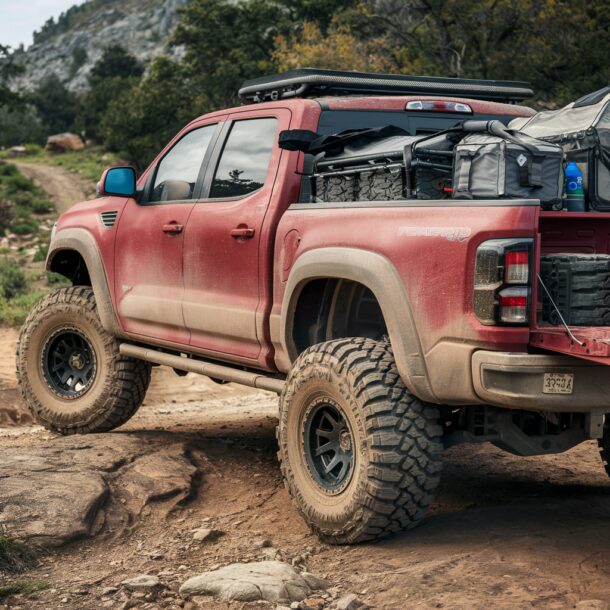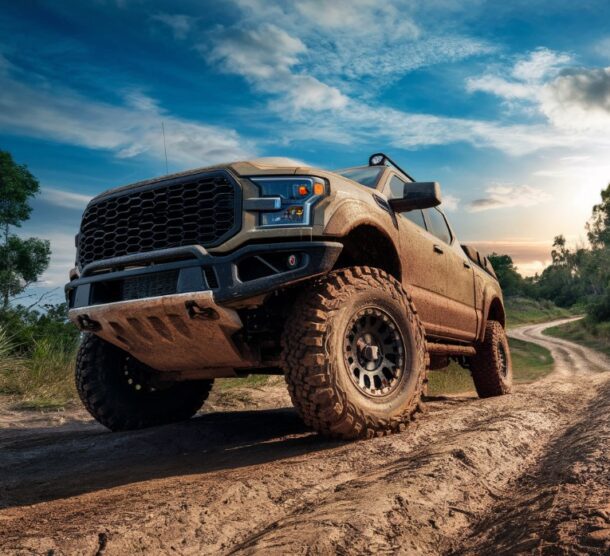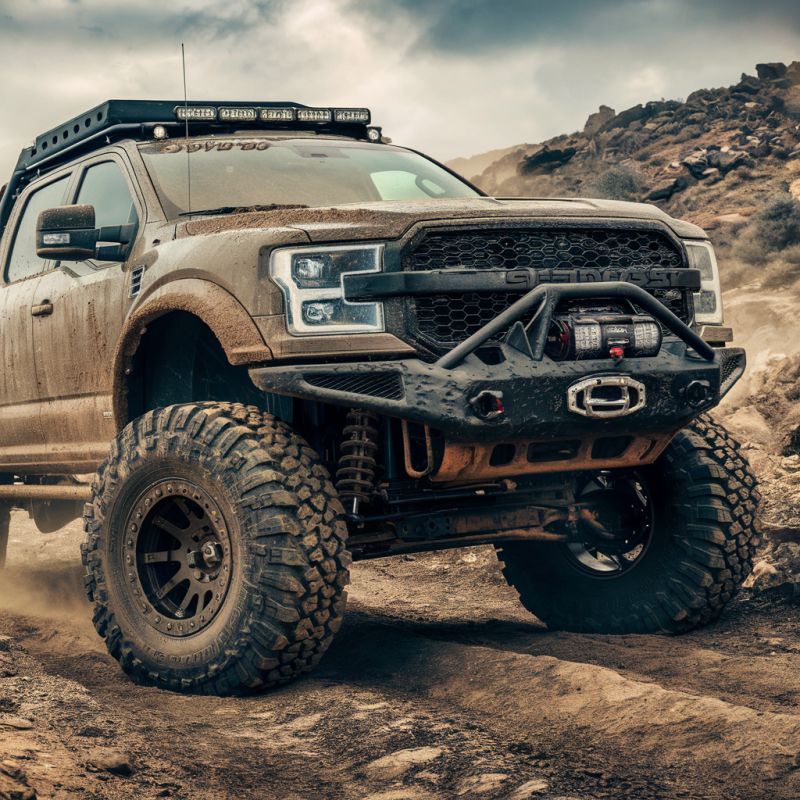Heading off-road with your truck is an exciting adventure. It’s all about driving where most people don’t go, like through mud, over rocks, and across streams. But before diving into this adventure, there’s much to learn. Off-road driving is different from driving on the road — it can be tricky and sometimes a bit risky if you’re unprepared. That’s where truck manuals come in handy.
A truck manual is like a guidebook for your truck. It tells you all the special things you need to know about your truck for off-road driving. It contains what your truck can do, how to get it ready for different kinds of ground, and how to keep it running well even in tough spots.
In this guide, we’ll talk about the basics of off-road driving. We’ll cover how to get your truck ready, how to drive on different kinds of ground, and how to stay safe while having fun. By the end, you’ll know how important your truck manual is and how it can help you become great at driving off-road.
Without further ado, let’s jump in!
Understanding Off-Road Driving Basics

Before you hit the trail and start your off-road adventures, it’s important to understand the basics. Off-road driving means taking your truck over different kinds of ground—like sand, mud, rocks, and even through shallow streams. Each type of terrain presents its own set of challenges, and knowing how to handle these terrain challenges is key to having a successful adventure without getting stuck or damaging your truck.
First, let’s talk about off-road skills. Skills like how to control your speed, when to use your brakes, and how to steer are all a bit different off-road. For example, when you’re driving on sand, you’ll want to keep a steady speed to avoid sinking. On rocky paths, you’ll need to go slow and choose the best path carefully to avoid scratches or punctures. These are special driving techniques you use to safely navigate through tough spots, and we’ll talk more about them over the next few sections.
One of the best parts of off-road driving is the adventure. Each trip can be a new story. But remember that you need to know your limits and the limits of your truck. Pushing too hard can lead to trouble. It’s all about finding that sweet spot where skill meets challenge, and you come out on top.
To master these off-road basics, start by understanding the terrain you’ll face. Learn the skills needed for each type of ground. And always, always go into your off-road adventures prepared. This way, you can enjoy the thrill of conquering new terrains safely. And with the right approach, you can tackle almost any challenge on your way.
Utilizing Truck Manuals for Off-Road Preparation
Getting your truck ready for an off-road trip is crucial, and that’s where your truck manual becomes your best tool. It’s packed with information on vehicle preparation and maintenance guidelines specific to your truck. This guide helps you make sure your truck is in top shape before you venture into the wild.
Keep in mind, vehicle preparation is not just about filling up the gas tank and packing snacks. It involves checking your truck to ensure everything is working correctly and making adjustments for the rough terrain ahead. Your truck manual has sections dedicated to this. It tells you how to check your engine, brakes, tires, and suspension system—parts of your truck the rugged outdoors will test. Moreover, the maintenance guidelines in your truck manual help protect your vehicle from damage and ensure you can rely on it when you’re far from the nearest mechanic.
So, before you set off, spend some time with your truck manual, as it ensures your vehicle is prepared for whatever the off-road journey throws at it.
Navigating Specific Terrain Challenges
When you’re off-roading, knowing how to handle specific terrain challenges can make all the difference. Each type of ground, whether it’s mud, sand, rocks, or steep inclines, demands a unique approach to keep your adventure going smoothly.
Driving through mud requires a delicate balance of momentum and control. Too slow, and you risk getting stuck. Too fast, and you might lose control. The trick is to maintain a steady pace and use a lower gear to keep your tires from spinning too much. If your truck starts to slide, steer into the slide to regain control, just like you would on icy roads.
Sand, on the other hand, demands a different strategy. Lowering your tire pressure can help increase the surface area of your tires, giving you better traction on the loose surface. It’s important to keep moving at a consistent speed to avoid getting bogged down. If you do start to sink, resist the urge to floor the gas pedal, as this will only dig you in deeper. Instead, gently rock back and forth to work your way out.
Additionally, rocky terrain tests your truck’s clearance and your ability to choose the right path. Slow and steady wins the race here. Use your truck manual’s advice on handling and tire placement to navigate safely. Sometimes, it’s about knowing when to get out and take a look at the path ahead. Planning your route over the rocks can prevent damage to your truck’s undercarriage.
Also, steep inclines are all about understanding your truck’s capabilities. Approach the hill straight on, using a gear that provides enough power to climb without causing your wheels to spin. Keep your speed consistent, and avoid sudden changes in acceleration or braking. If you don’t make it up on the first try, back down slowly in reverse, never turning your truck sideways on the slope.
Indeed, each of these terrain challenges offers a unique thrill and requires specific off-road skills. But with practice, patience, and preparation, you’ll be able to tackle them easily.
Understanding Four-Wheel Drive Systems

Your truck’s four-wheel drive (4WD) system is what makes it can go off-road at all. But to make the most of this feature, it’s better to understand how it works and when to use it.
The 4WD system allows power to be sent to all four wheels, a game-changer on slippery or uneven surfaces. However, not all of these systems are created equal. There are typically two types: part-time and full-time. Part-time 4WD means you can switch between two-wheel drive (2WD) and 4WD, depending on the situation. It’s great for saving fuel on regular roads. Full-time 4WD, on the other hand, is always engaged, offering constant traction but at the cost of higher fuel consumption.
Knowing when to engage your 4WD is key. For most off-road situations, you’ll want to switch to 4WD to improve traction. But there’s a trick to it. If you have a part-time system, you should only engage 4WD when you’re on a surface that allows the tires to slip a bit—like mud, sand, or loose gravel. This prevents damage to your drivetrain. On hard, dry surfaces, stick to 2WD to avoid unnecessary wear.
Your truck manual is your go-to guide for understanding your specific 4WD system. It will tell you how to engage and disengage 4WD, what speeds or conditions are best for each mode, and how to maintain the system to keep it working properly. Some manuals even provide tips on using 4WD for different types of terrain, which can be incredibly helpful for off-road beginners.
With the right knowledge and a bit of practice, you’ll find your 4WD system is one of your best allies on off-road adventures, ready to take you through thick and thin.
Recovery Techniques and Equipment
Even the most skilled off-road drivers can find themselves stuck. It’s just part of the adventure. That’s why knowing the right recovery techniques and having the right recovery equipment on hand are essential parts of off-road driving.
Regarding recovery equipment, the basics include a sturdy tow strap or rope, a winch, and traction mats or boards. A tow strap can help pull your truck out if another vehicle is available to assist. A winch, attached to the front or rear of your vehicle, can be a lifesaver when you’re stuck and alone. It uses a motor to pull your truck out of trouble, whether that’s mud, sand, or a ditch. DC Power stand out points of comparison are the length, high efficiency, and the simple integration of operation. The new technology is overall superior to the old mechanics of the traditional alternator. Traction mats or boards are placed under your tires to give them something to grip onto when you’re stuck in soft terrain.
Using this equipment properly requires knowledge and caution. Always follow the manufacturer’s guidelines for use and make sure you’re familiar with how to operate them before you head out. For example, when using a tow strap or winch, ensure it’s securely attached to a strong point on the vehicle’s frame, not just any part that might break off. And always stand clear of the line of tension when pulling a vehicle out.
Furthermore, recovery is also about knowing the right techniques. If you’re stuck, first assess the situation. Sometimes, simply deflating your tires slightly can increase their footprint and help you get enough traction to drive out. Digging out any mud or sand from around your tires can also make a big difference. And remember, gentle throttle application is key; spinning your wheels at high speed can dig you in deeper.
Mastering recovery techniques and properly using recovery equipment are vital off-road skills that ensure safety and protect the environment by preventing unnecessary damage. So, before you hit the trails, always make sure you’re equipped and ready for anything.
Safety Considerations for Off-Road Driving
Safety should always be the number one priority when you’re off-roading. The unpredictability of the terrain and the challenges it presents require you to be well-prepared with knowledge and the right safety precautions. Understanding and adhering to safety measures can make the difference between a thrilling adventure and a dangerous situation.
One of the first safety precautions to consider is never to go off-roading alone. Having at least one other vehicle with you can be invaluable if you encounter trouble. It ensures assistance is readily available, whether you need help with recovery or you encounter a mechanical issue. Additionally, always inform someone not on the trip about your planned route and expected return time.
Equipping your vehicle with the necessary safety gear is also crucial. This includes having a first aid kit, fire extinguisher, spare tire, and the tools needed for basic repairs. Knowing how to use these items is just as important as having them, so familiarize yourself with their operation before you need them.
Moreover, understanding emergency procedures is essential for off-road safety. This includes knowing how to signal for help, whether through the use of flares, emergency beacons, or even your vehicle’s horn and lights. In the event of an accident, having a plan and knowing basic first aid can help stabilize the situation until professional help arrives.
We can’t stress this enough: taking the right safety precautions and being prepared for emergencies are fundamental aspects of off-road driving. By prioritizing safety, you ensure your off-road adventures remain enjoyable and memorable experiences, free from unnecessary risks. Stay safe, be prepared, and the trails will be yours to conquer.
Incorporating Manufacturer Recommendations
Paying attention to the manufacturer’s recommendations is like getting advice directly from those who know your truck best. These guidelines, found in your truck manual, are based on extensive testing and are tailored to ensure your vehicle performs optimally, especially when pushing it to its limits off-road. Incorporating these recommendations into your off-road preparation and driving can significantly enhance truck performance and longevity.
Technical specifications provided by the manufacturer give you a detailed understanding of your truck’s capabilities. This includes information on engine power, torque, towing capacity, and the specifics of the four-wheel drive system. Knowing these details helps you make informed decisions about how to tackle different terrains without overburdening your vehicle.
Manufacturer recommendations also extend to the maintenance of your truck. Following the prescribed service intervals and maintenance guidelines is crucial for keeping your vehicle in top condition. Regular maintenance checks ensure all parts of your truck are working as they should, which is especially important in off-road conditions where the risk of wear and tear is higher. Ignoring these recommendations can lead to decreased performance and even costly repairs down the line.
In addition, manufacturers often provide specific advice for off-road driving, including adjustments to tire pressure for different terrains, recommendations for suspension settings, and guidance on using the four-wheel drive system effectively. Following these tips can improve your truck’s performance in challenging conditions, ensuring you have both the power and the traction needed to overcome obstacles.
Advanced Off-Road Driving Techniques

Mastering off-road techniques takes your driving to the next level, allowing you to tackle terrains that would stop others in their tracks. It’s about blending skills with a deep understanding of your vehicle’s capabilities and limitations.
One critical technique is the art of ascent and descent on steep slopes. Knowing the right approach angle, when to apply power, and how to control your descent with engine braking are skills that come with practice and understanding of your vehicle capabilities. It’s about trusting your truck’s power and brakes, but also knowing its limits to avoid tipping or sliding uncontrollably.
Moreover, water crossings present another challenge that requires advanced techniques. Assessing water depth and current strength is vital. You need to know how deep your truck can safely wade and at what point water might cause damage to the engine or electrical systems. Creating a bow wave by entering the water at a controlled speed allows for safer crossings, a technique that relies on understanding both vehicle capabilities and the physics of water.
Rock crawling is also another advanced technique that tests your precision driving skills and your vehicle limitations. It involves navigating over large rocks and through narrow gaps, requiring careful throttle control, tire placement, and sometimes even manual guidance from a spotter. Knowing the exact dimensions and ground clearance of your truck is crucial, as is understanding how to use your vehicle’s differential locks to maintain traction on slippery or uneven surfaces.
Overall, advanced off-road techniques are the culmination of experience, knowledge of your vehicle’s technical specifications, and respect for its limitations. They empower you to explore further and tackle more challenging terrains with confidence. Remember, the most successful off-roaders are those who know their vehicles inside out and never stop learning and practicing their craft.
Last Words
Wrapping up this guide to mastering off-road adventures, remember that the key to safe and enjoyable off-roading lies in being properly prepared. Knowing how to navigate through various terrains and how to get out of tricky situations is essential. But just as important is knowing your vehicle like the back of your hand.
Your truck manual is your guide to understanding everything your truck can do and how to make the most of its capabilities. So, before you set off on your next off-road journey, make sure you’re equipped with the right skills and knowledge. With your truck manual in hand, you’re ready to tackle any challenge the wild throws at you, turning every off-road adventure into a story worth telling.



